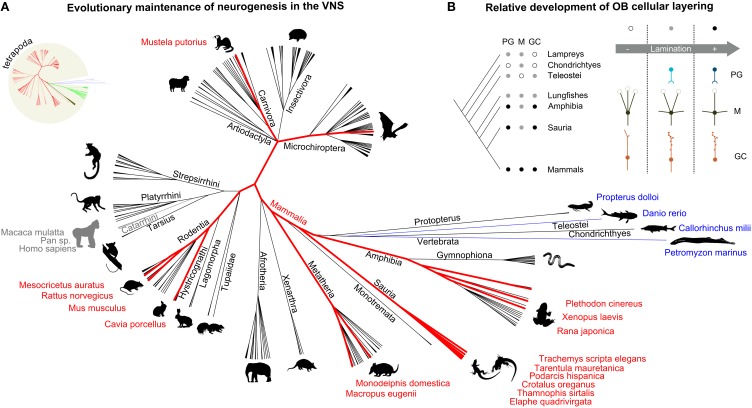Figure 2.
Neuronal plasticity in the vomeronasal system is a conserved trait across several vertebrate species. The increased organizational complexity of the olfactory systems is plausibly related to their protracted development through postnatal neurogenesis. (A) Cladogram representing the main vertebrate taxa in which the presence of a vomeronasal system has been reported (black lines). Taxa indicated in blue possess the cellular and molecular elements of the VNS, without a defined structural organization. Old world monkeys are indicated in gray, as reference, although they generally do not possess a functional VNS. The species (and related taxa) in which neurogenesis in the VNS has been reported are highlighted in red. (B) Features of the vertebrate olfactory systems include: more defined cellular layering (white: low, gray: moderate, black: high lamination), presence of periglomerular cells, PG (white: absent, gray: ambiguous, black: present), development of mitral cell secondary dendrites, M (white: absent, only multiglomerular primary dendrites, gray: presence of both multiglomerular primary dendrites and secondary dendrites, black: monoglomerular primary dendrites and secondary dendrites), loss of granule cell axon, GC (white: smooth dendrites, axon, gray: spiny dendrites, axon, black: spiny dendrites, no axon). Sources: (Meisami and Bhatnagar, 1998; Eisthen, 2000; Halpern and Martinez-Marcos, 2003; Grus and Zhang, 2008; Eisthen and Polese, 2009; Mucignat-Caretta, 2010); NCBI.

